
Lot 219
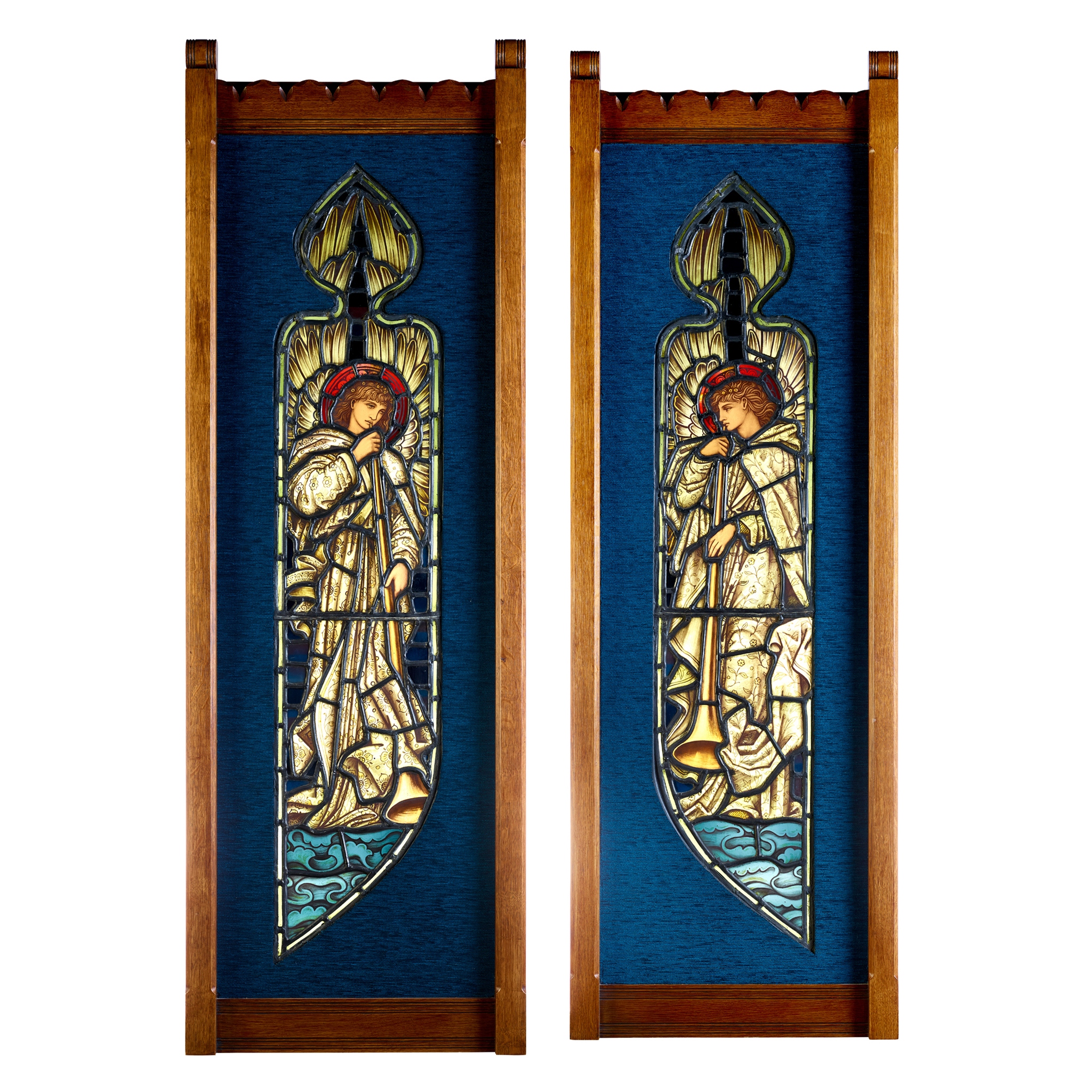
SIR EDWARD BURNE-JONES (1833-1898) FOR MORRIS & CO.
'TWO ANGELS WITH LONG TRUMPETS', A PAIR OF STAINED GLASS PANELS, 1915

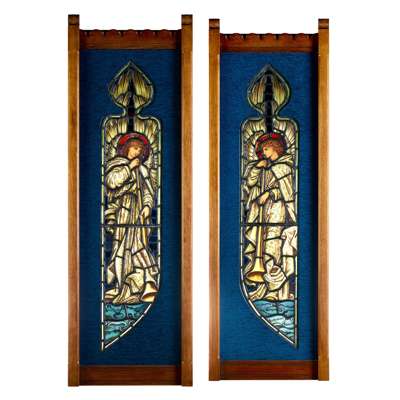
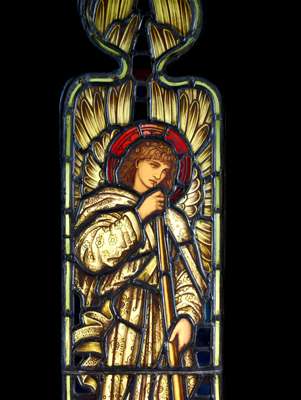
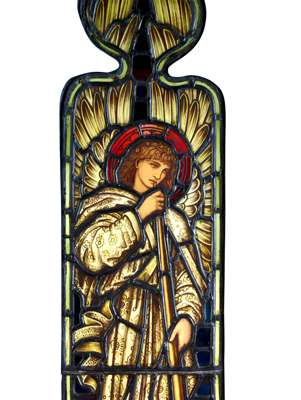
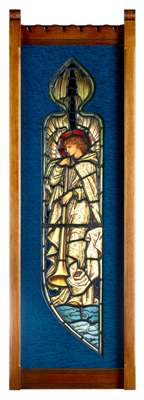
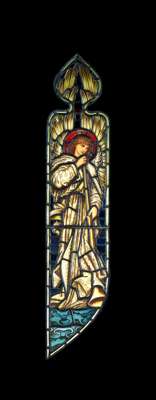
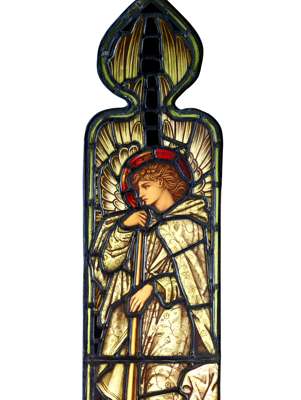
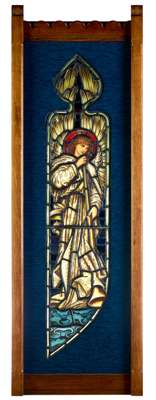
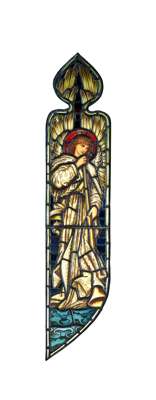
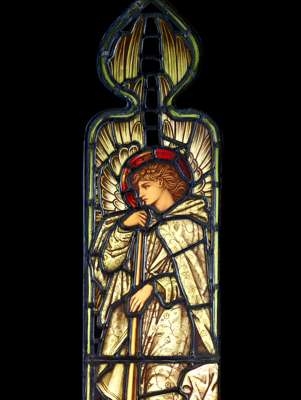
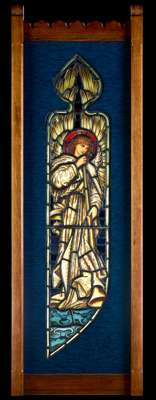
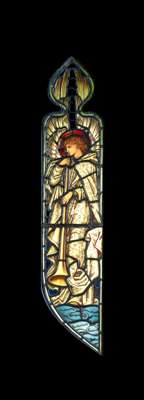
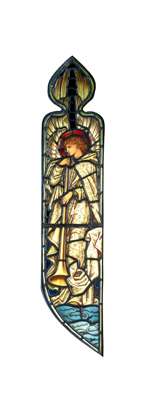


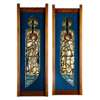












Auction: Day One inc Contents from a London Apartment | Lots 197 to 333 | Wednesday 15th October
Description
stained, leaded and painted glass, each within chenille material borders and framed in later carved oak frames and including light boxes (2)
“These exceptional windows (lots 219 & 220) by Morris & Co show the firm using the same designs from Burne-Jones in a late commission long after William Morris and Edward Burne-Jones had died. Their aesthetic beauty and impeccable quality are testament to the dedication of John Henry Dearle, Morris’s brilliant apprentice and later art director for the firm who continued to honour the legacy of the firm by adapting earlier designs to new commissions.” - John Mackie, Head of Design
Dimensions
each panel 121cm x 25cm (frame size excluding light box 152.3cm high, 50.5cm wide, 14.2cm deep)
Provenance
Haslam & Whiteway, London
Private collection, London
Footnote
Literature: Cormack P. Morris & Company's Stained Glass for The Chapel of Cheadle Royal Hospital, Haslam & Whiteway Ltd. catalogue 2008, pp. 2-3 and pp. 14 -15.
The commission for the glazing of the new Chapel at Cheadle Royal Hospital, near Manchester, represents a significant episode in the later history of Morris & Company. Between 1906 and 1915, the firm provided a complete scheme of stained glass for the building, which consisted of twelve multi-light windows in a Perpendicular Gothic structure. The east window was installed first (1906), followed by the side windows (1909–1911), and the west window (1915). This programme reflected a deliberate choice by the patrons to ensure stylistic unity by entrusting the entirety of the Chapel’s glazing to Morris & Co.
The design process was overseen by John Henry Dearle, then Art Director, who consulted with the hospital authorities on the selection of biblical figures and narrative scenes. While most of the cartoons were the work of Edward Burne-Jones, dating from commissions of the 1860s to 1890s, their adaptation for Cheadle was carefully coordinated to produce a coherent scheme. The surviving watercolour sketches and pattern designs, now in the Huntington Library, provide rare insight into this process.
The Cheadle windows illustrate the persistence of Morris & Co.’s late nineteenth-century aesthetic after the deaths of Morris and Burne-Jones. Executed by long-serving craftsmen, they embody the continuity of the firm’s technical and stylistic practices and exemplify its capacity to sustain high standards well into the twentieth century.
The designs for Two Angels with Long Trumpets were originally drawn by Burne-Jones as full-size figures for a major window at Cheddleton Church, Staffordshire, in 1869. The cartoons were subsequently adapted for several other Morris & Co. windows, including full-size versions at All Saints’, Bingley (1874), and tracery versions at Holy Trinity, Sloane Street, London (1894–95). The current examples were two parts of a tracery light from above the Ascension scene in the Chapel's west window and their reappearance at Cheadle highlights the firm’s practice of reinterpreting established designs to ensure stylistic consistency across different commissions.



























